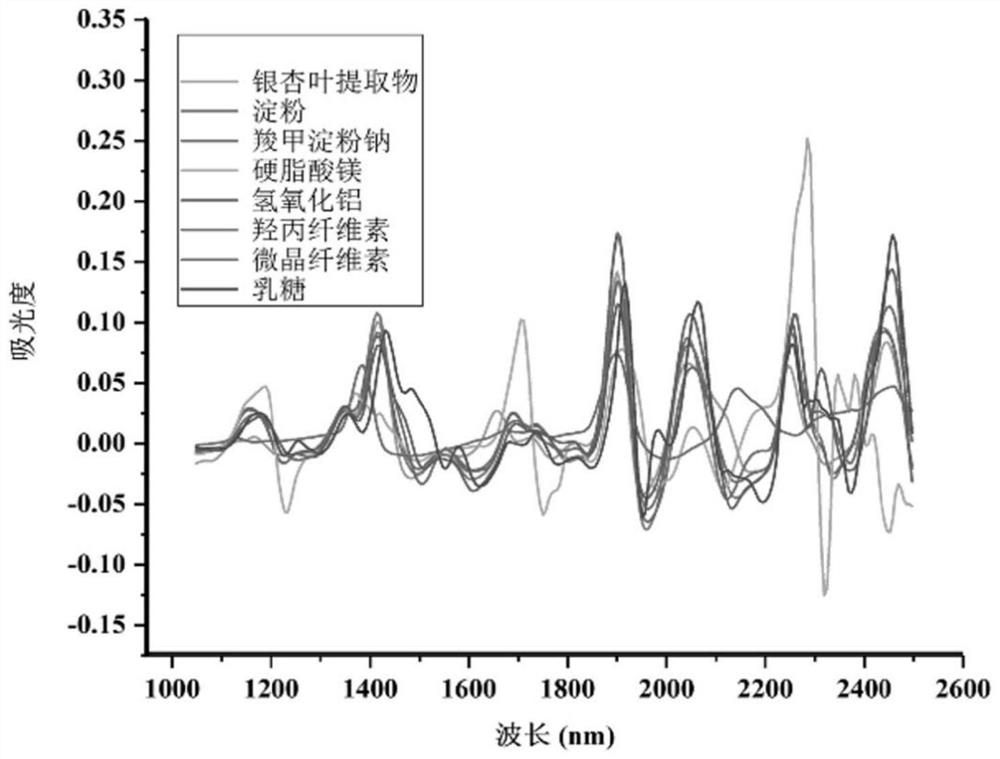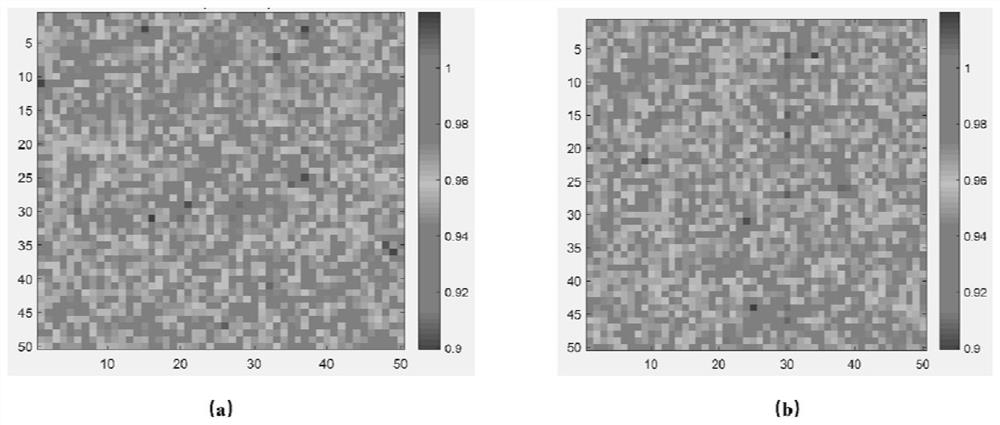Visualization method for detecting spatial distribution uniformity of ginkgo leaves by adopting artificial intelligence hyperspectral imaging
A technology of hyperspectral imaging and Ginkgo biloba leaves, which is applied in color/spectral characteristic measurement, material analysis through optical means, image enhancement, etc. It can solve the problems that the spatial distribution uniformity of ingredients affects the efficacy of drugs, and affects the safety and effectiveness of clinical medication. Achieve the effect of improving quality control level, ensuring safety and effectiveness
- Summary
- Abstract
- Description
- Claims
- Application Information
AI Technical Summary
Problems solved by technology
Method used
Image
Examples
Embodiment 1
[0033] Example 1: Prediction of Ginkgo biloba leaf content based on PLS model
[0034] Sample preparation: Take 18 batches of 4 tablets in each batch, a total of 72 ginkgo leaf element tablets (uncoated tablets) as samples, in which the content of ginkgo leaf extract is about 25.57%.
[0035] Hyperspectral image acquisition: The ginkgo leaf samples were placed horizontally on the workbench, and images were acquired in push-broom mode using SisuCHEMA hyperspectral chemical imaging workstation (SPECIM, Finland). Under the condition that the lens can focus normally, adjust the distance between the lens and the sample, and finally determine the parameters of image acquisition: the lens height is 15cm, the frame frequency is 42.02Hz, the integration time is 4.20ms, the spectral range is 970-2575nm, and the spectral resolution is The size of the acquired hyperspectral data cube is 50 pixels × 50 pixels × 288, that is, the length and width are both 50 pixels, and the number of spectr...
Embodiment 2
[0039] Example 2: Prediction of Ginkgo biloba leaf content based on CLS model
[0040] Sample preparation: Take 18 batches of 4 tablets each, with a total of 72 ginkgo leaf elements as samples. The components of ginkgo leaf include ginkgo leaf extract (about 25.57%) and 7 kinds of excipients (starch, low-substituted hydroxypropyl cellulose, microcrystalline cellulose, lactose, sodium starch glycolate, aluminum hydroxide and magnesium stearate).
[0041] Hyperspectral image acquisition: The ginkgo leaf sample was placed horizontally on the workbench, and the ginkgo leaf extract and 7 kinds of excipient powders were placed in a watch dish with a size of 30 mm × 30 mm, and the surface was compacted and kept as flat as possible. Using SisuCHEMA hyperspectral chemical imaging workstation (SPECIM, Finland), in push-broom mode, hyperspectral images of the above samples were collected with the following parameters: the lens height was 15 cm, the frame frequency was 42.02 Hz, the integ...
Embodiment 3
[0046] Example 3: Prediction of Ginkgo biloba leaf content based on MCR-ALS model
[0047] Sample preparation: Take 18 batches of 4 tablets each, with a total of 72 ginkgo leaf element tablets as samples. The components of ginkgo leaf leaf include Ginkgo biloba leaf extract (about 25.57%) and 7 kinds of auxiliary materials (starch, low-substituted hydroxypropyl cellulose, microcrystalline cellulose, lactose, sodium starch glycolate, aluminum hydroxide and magnesium stearate), a total of 8 ingredients.
[0048] Hyperspectral image acquisition: The ginkgo leaf sample was placed horizontally on the workbench, and the SisuCHEMA hyperspectral chemical imaging workstation (SPECIM, Finland) was used to collect hyperspectral images of the above samples in push-broom mode with the following parameters: the lens height was 15cm, The frame frequency is 42.02Hz, the integration time is 4.20ms, the spectral range is 970-2575nm, and the spectral resolution is 8nm. The size of the acquired h...
PUM
 Login to View More
Login to View More Abstract
Description
Claims
Application Information
 Login to View More
Login to View More - R&D
- Intellectual Property
- Life Sciences
- Materials
- Tech Scout
- Unparalleled Data Quality
- Higher Quality Content
- 60% Fewer Hallucinations
Browse by: Latest US Patents, China's latest patents, Technical Efficacy Thesaurus, Application Domain, Technology Topic, Popular Technical Reports.
© 2025 PatSnap. All rights reserved.Legal|Privacy policy|Modern Slavery Act Transparency Statement|Sitemap|About US| Contact US: help@patsnap.com



